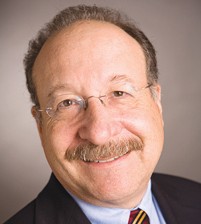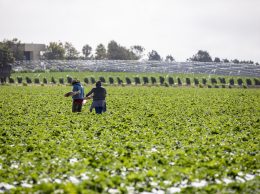Dubroff: Stormy weather, surging stocks plug one county’s fiscal pothole
IN THIS ARTICLE
- Columns Topic
- Henry Dubroff Author
By Henry Dubroff Friday, February 24th, 2017

Henry Dubroff
The weather and the election of Donald Trump don’t appear to have much in common.
But the rainstorms that struck over President’s Day weekend and the Trump bump in the stock market have had a big impact on the fiscal fortunes of Santa Barbara County.
Hopefully, the powers that be will take advantage of a couple of breaks to fix a broken pension system and get expenses in line with revenue.
First, the weather. As has been widely reported, the rainstorms of Feb. 18-20 triggered a 30-foot rise in the level of Lake Cachuma, raising it to around 40 percent of capacity. That puts Cachuma at roughly 80,000 acre feet of water with prospects of ending the year at 100,000 acre feet or more by the end of the season.
The value of that water is hard to calculate because the cost of an average acre foot is relatively low compared to the “marginal” cost of buying an additional acre foot in a drought year. But the rain that’s filled Cachuma — and is helping to fill Lake Casitas and other reservoirs in the region — represents tens of millions of dollars in value to taxpayers. If the lake actually fills to its 193,000 acre feet of capacity this year or next, that value would be even higher.
Yes, there are costs. As television news constantly reminds us, there is mud and debris to clean up, highways to reopen and toppled trees to remove. The Oroville Dam spillway catastrophe is a stark reminder that extreme weather can bring about extreme risk.
But the value of full reservoirs to agriculture, tourism, restaurants, property values and the overall economy is widespread — and some of that value flows downhill into the county’s coffers.
Second is the Trump effect on global stock markets. Just a few months ago, Santa Barbara County released another dismal report on the shape of its $2.5 billion pension fund.
For yet another year the plan failed to reach its benchmark of a 7 per cent gain, after that benchmark was lowered from 8.16 percent to 7 percent in recent years. And Santa Barbara is just one of a handful of California counties whose pension costs exceed 10 percent of the county’s budget; it totaled around 13 percent this fiscal year and by some calculations those costs are headed from around $10 million to $40 million in the coming years.
But the Trump effect on the stock market has reversed the fortunes for endowments holding large equity holdings. If my calculations are correct and if the gains hold through the end of the June 30 budget year, then Santa Barbara County will have exceeded its benchmark and succeeded in topping the fund’s all time high of just over $2.55 billion set in 2015. The county’s bond holdings will likely decline in value as interest rates have risen but the rise in stocks should more than offset the impact on fixed income investment.
A 10 percent rise in the county’s pension fund is not out of the question and that would roughly place the fund at $2.8 billion at the end of the year, putting a dent in its unfunded liabilities.
However the gap is still huge. After underperforming last year, the fund had just over 71 percent of the assets it needed to fulfill all of its obligations as of June 30, 2016, down from 78 percent a year earlier.
California’s left-leaning politicians may dream of independence. But they can’t liberate themselves from the vagaries of U.S. financial markets — or the unanticipated appearance of an atmospheric river over much of the Pacific Coast.
• Reach Editor Henry Dubroff at [email protected].











